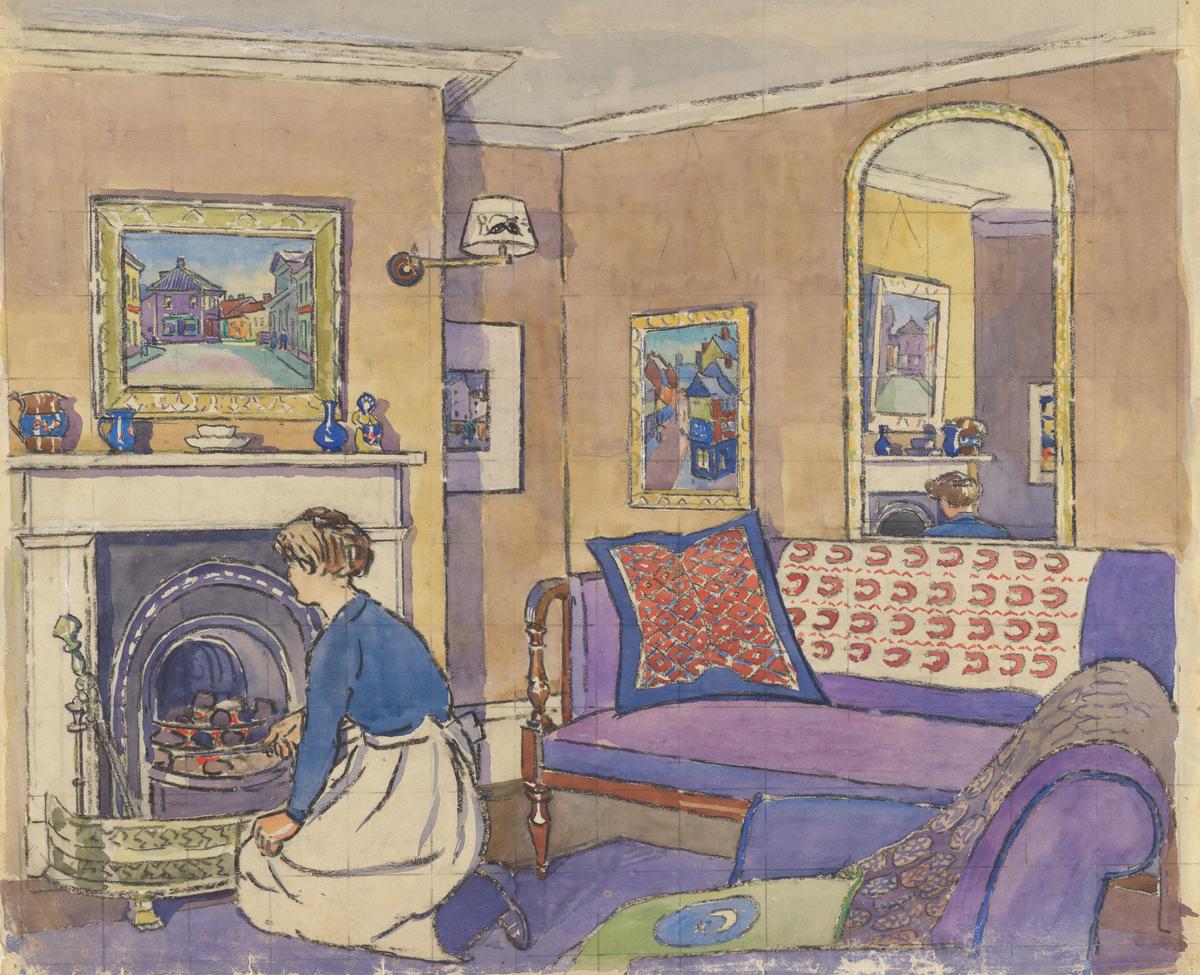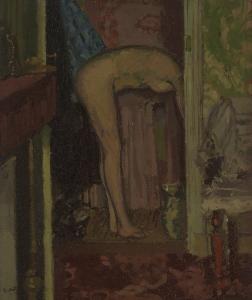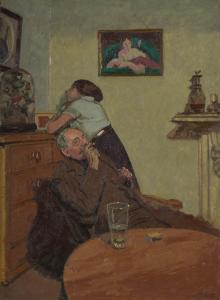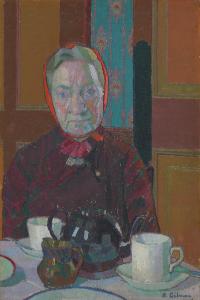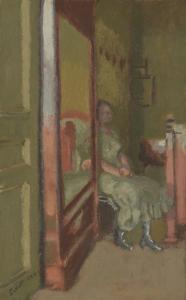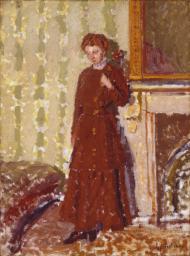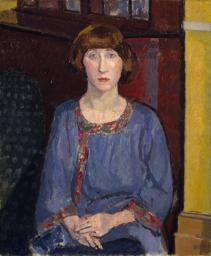Douglas Fox Pitt Interior with Maid c.1913
Douglas Fox Pitt,
Interior with Maid
c.1913
Brighton, where Fox Pitt lived from 1911–18, was the most common subject of his watercolour paintings. This detailed picture reveals a domestic interior: a maid kneeling at the hearth wears a dress in the same dark tone as the richly coloured carpet and sofa of the painter’s sitting room. A bold-patterned throw may be from the Omega Workshops; street scenes by Harold Gilman and Charles Ginner hang on the walls.
Douglas Fox Pitt 1864–1922
Interior with Maid
c.1913
Graphite, charcoal and watercolour on paper
410 x 480 mm
Presented by Sarah Fox-Pitt and Anthony Pitt Rivers 2009
T12996
c.1913
Graphite, charcoal and watercolour on paper
410 x 480 mm
Presented by Sarah Fox-Pitt and Anthony Pitt Rivers 2009
T12996
Ownership history
...; Sotheby’s, London, 15 May 1985 (100, part of a large folio of watercolours and drawings by Fox Pitt); purchased by the artist’s great niece Sarah Fox-Pitt and Anthony Pitt Rivers, by whom presented to Tate 2009.
Technique and condition
Interior with Maid is executed on cream laid paper that has watermarks stating that it was ‘Made in France’ by the probable maker ‘JCA’ as well as the paper type ‘Ingres’. The drawing has been carried out using bright watercolours that have retained their vibrancy, and charcoal has been used to accentuate the outlines. The paper has been left unpainted in some areas, such as the figure’s apron and the fireplace.
There is some slight damage and discolouring to the paint and paper on the bottom edge, possibly resulting from it having been attached with an adhesive to an old mount from which it has been removed.
There are pinholes in the four corners suggesting that it was pinned to a wall. The watercolour is squared up as if for transfer onto canvas, but no version in oils is recorded.
Jo Gracey
February 2009
Piers Townshend and Helena Bonett
June 2010
How to cite
Jo Gracey, Piers Townshend and Helena Bonett, 'Technique and Condition', June 2010, in Robert Upstone, ‘Interior with Maid c.1913 by Douglas Fox Pitt’, catalogue entry, July 2009, in Helena Bonett, Ysanne Holt, Jennifer Mundy (eds.), The Camden Town Group in Context, Tate Research Publication, May 2012, https://wwwEntry
Although he was never one of its formal constituents, Douglas Fox Pitt was part of the circle around the Camden Town Group. When they disbanded and reconvened as the more radical London Group in 1913 – containing the advanced modern elements of David Bomberg, Jacob Epstein and the vorticists – Fox Pitt became a founder member. His own art nevertheless followed the progressive but still conservative figurative style established by the Camden Town painters, most notably adopting their bright, post-impressionist palette. Fox Pitt’s pictures of street scenes and city landscapes to some degree also recall Camden Town Group subject matter. A man of independent means, he worked generally in watercolour, and his pictures became known through a series of London exhibitions of scenes painted on foreign travels in India, Morocco and elsewhere. Closer to home, views of Brighton formed the most common subject in his art.
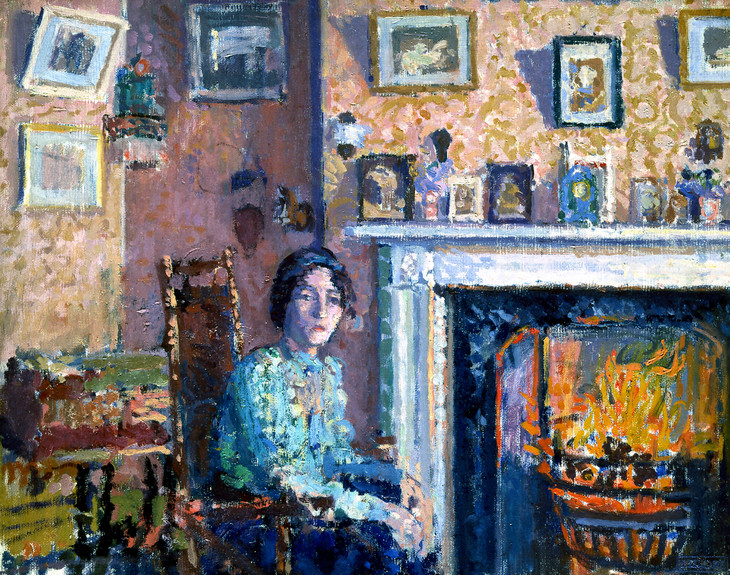
Spencer Gore 1878–1914
Interior, Mornington Crescent c.1910
Oil paint on canvas
406 x 508 mm
Colchester and Ipswich Museum Service
Photo © Colchester and Ipswich Museum Service
Fig.1
Spencer Gore
Interior, Mornington Crescent c.1910
Colchester and Ipswich Museum Service
Photo © Colchester and Ipswich Museum Service
Robert Upstone
July 2009
Notes
Related biographies
Related essays
Related catalogue entries
How to cite
Robert Upstone, ‘Interior with Maid c.1913 by Douglas Fox Pitt’, catalogue entry, July 2009, in Helena Bonett, Ysanne Holt, Jennifer Mundy (eds.), The Camden Town Group in Context, Tate Research Publication, May 2012, https://www

